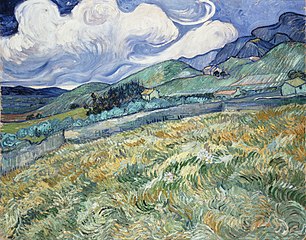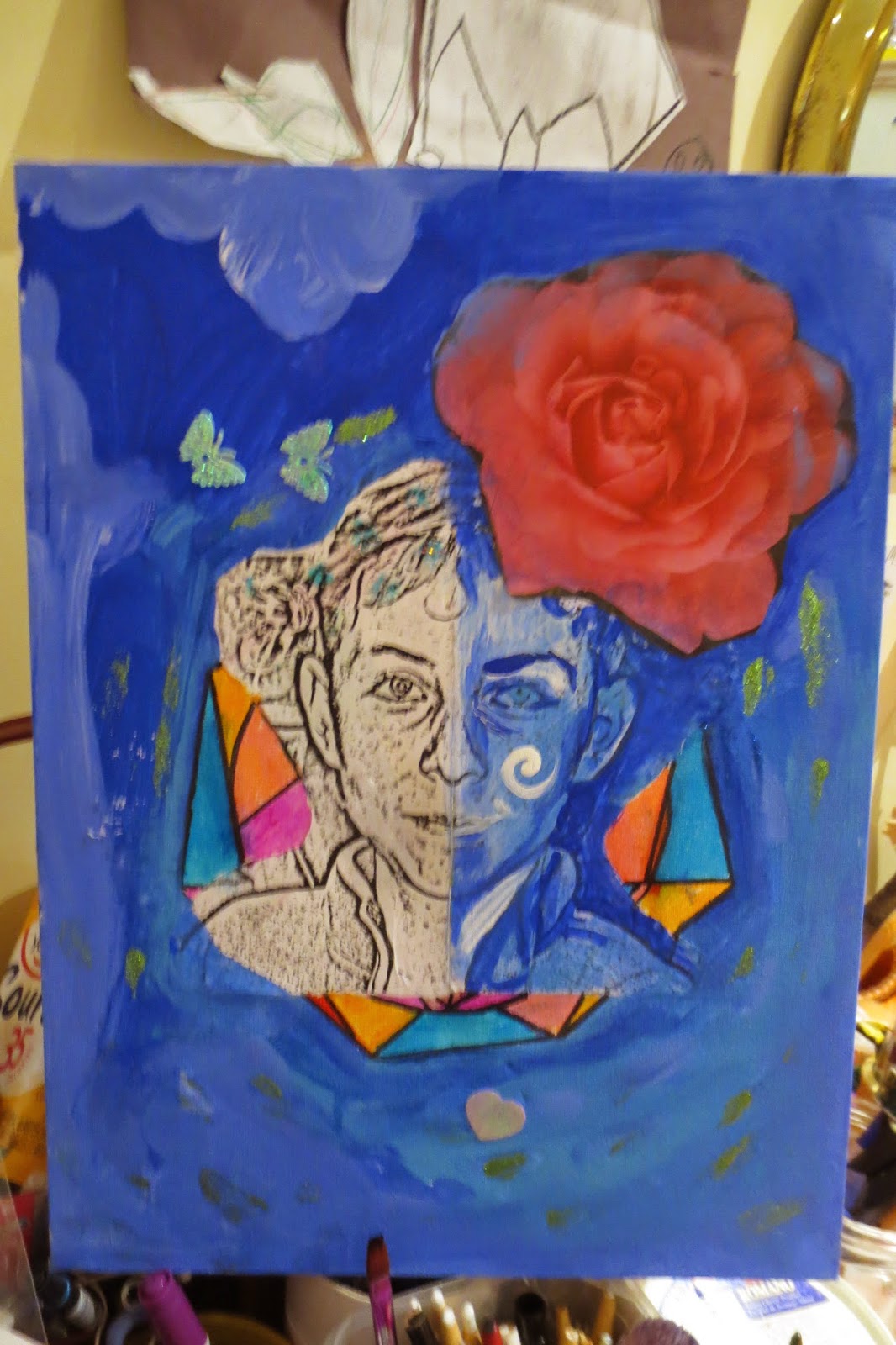I appreciate that we don't all work the same way or approach artmaking in the same 'direction', so to speak, so it was really fun working with all of you on your different ideas, and thanks for including mine.
I would like to leave you with the images below by Vincent Van Gogh, painted in 1890. Look for a background, middle-ground and foreground. Can you identify three distinct regions(depths) to the artwork? Can you see more? Other than colour temperature ie; cool blue, cooler greens or warmer greeny yellows)- can you see other elements of composition or detail that help the painting describe a depth? Can you find an element that makes the painting seem very flat as well (what about line quality or perhaps style?). Think about the terms push (where things come forward) and pull(where things go back) and how they can apply in painting and why that might be interesting. Lastly, look at your own work again with the above in mind.
 |
| Wheat Fields after the Rain (The Plain of Auvers), July 1890, Carnegie Museum of Art, Pittsburgh, PA (F781) |
 |
| Wheat Field Behind Saint-Paul, November 1889, Virginia Museum of Fine Arts, Richmond, Virginia (F722) |
 | ||
| Tree trunks in the grass [Boomstammen in het grass] Collection: Kröller-Müller Museum, Otterlo via http://nga.gov.au/exhibition/turnertomonet/Detail.cfm?IRN=165860 |



























